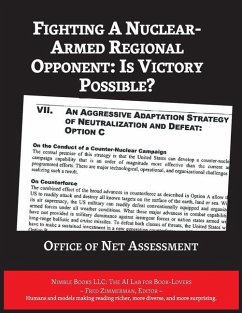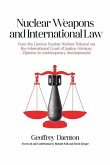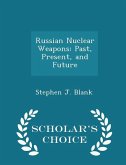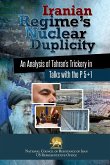In a world on the brink, where technological prowess collides with ancient fears, this book offers a beacon of strategic clarity. As nuclear proliferation casts a shadow over global stability, understanding the dynamics of a nuclear-armed regional opponent is no longer a matter of academic curiosity but a vital necessity. This book equips you with the knowledge to navigate this complex landscape, connecting the lessons of the Cold War to the realities of today's volatile geopolitical chessboard. Driven by the fundamental human need for security, this is a must-read for policymakers, military professionals, and anyone concerned about the future of international peace and security. This study, prepared by the Center for Strategic and Budgetary Assessments for the Office of Net Assessment in the Office of the Secretary of Defense, examines the increasing likelihood that the United States will face nuclear-armed regional adversaries in future conflicts and explores the implications of this likelihood for US strategy, military planning, and force structure. The report also examines how the history of nuclear proliferation suggests a new period of punctuated equilibria in which the number of states possessing nuclear weapons will increase. The study then analyzes how emerging nuclear powers may seek to take advantage of the apparent brittleness of current US strategic and operational responses to the nuclear threat, which are rooted in the binary choice between inaction and nuclear retaliation. The authors identify three basic strategic and operational responses available to the US: Option A, or the status quo, which relies on overwhelming conventional military superiority coupled to nuclear deterrence; Option B, or a Moderate Adaptation Strategy, in which the United States makes a major investment in counterforce and active/passive defense capabilities to neutralize a regional nuclear threat without recourse to a large-scale nuclear retaliatory response; and Option C, or an Aggressive Adaptation Strategy of Neutralization and Defeat, in which the United States invests in the full range of counterforce, active defense, and C4ISR capabilities to neutralize a regional nuclear threat and to prevail in a protracted regional conflict despite nuclear weapons use by the adversary. After analyzing both the requirements and feasibility of Options B and C, the study concludes with several recommendations to prepare the US for this challenge.These recommendations include developing new concepts of operations, training for counter-nuclear operations, operating from heavily defended bases within the theater of operation, preparing for dispersed combined arms operations, and determining an appropriate EMP tax to ensure that all future combat systems can function in an electronically disturbed environment. Finally, by preparing for a regional nuclear conflict, US military forces will also obtain a robust capacity to deal with opponents equipped with a large arsenal of precision-guided, tactical and theater range munitions. This annotated edition illustrates the capabilities of the AI Lab for Book-Lovers to add context and ease-of-use to manuscripts. It includes several types of abstracts, building from simplest to more complex: TLDR (one word), ELI5, TLDR (vanilla), Scientific Style, and Action Items; essays to increase viewpoint diversity, such as Grounds for Dissent, Red Team Critique, and MAGA Perspective; and Seven Striking Passages.
Hinweis: Dieser Artikel kann nur an eine deutsche Lieferadresse ausgeliefert werden.
Hinweis: Dieser Artikel kann nur an eine deutsche Lieferadresse ausgeliefert werden.








